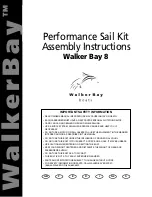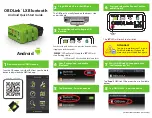
Safety
11
Preventing poisoning
The unit may overheat. This may lead to the formation of oil mist and oil vapor.
Ensure sufficient ventilation.
Wear respiratory protection in poorly ventilated rooms and if oil mist and oil
vapors are present.
Switch off of the unit if it overheats.
Leave the unit to cool down.
Use a contactless infrared thermometer to ensure that the unit has cooled
down to 25
°C (77
°F).
Check the unit for any damage.
If the unit is damaged, repair it before using it again.
Soak up any escaped liquid with a cloth immediately.
Dispose of the cloth in an environmentally friendly manner.
Preventing bone fractures and crushing
Bone fractures and crushing may occur. The unit can fall if it is set up, lifted or
carried in an unsafe manner. Risk of slipping and therefore bone fractures
during hydraulic work!
Always place the unit on a level, solid and strong surface.
Secure the unit and tools against falling.
Wear safety shoes with steel toes when lifting and carrying the unit.
Wear safety shoes with non-slip soles for hydraulic work.
Preventing eye damage
For pressure levels over 700 bar (10,000 psi) and operation of the unit outside
the tool and hose specification, hydraulic hoses may burst, causing hydraulic
oil to be ejected. Hydraulic oil may also escape during leak testing while the oil
tank is open.
Ensure that the permitted pressure levels are not exceeded.
Comply with the tool and hose specifications.
Consult the operating instructions for the tools and the hose specification.
Wear chemical-resistant protective goggles.












































